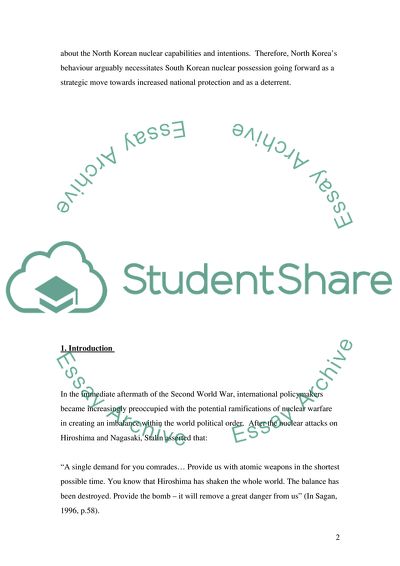Cite this document
(“South Koreas Strategy in Response to North Koreas Nuclear Weapon Research Paper”, n.d.)
South Koreas Strategy in Response to North Koreas Nuclear Weapon Research Paper. Retrieved from https://studentshare.org/politics/1747142-s-koreas-strategy-in-response-to-n-koreas-nuclear-weapon-is-possession-a-right-choice
South Koreas Strategy in Response to North Koreas Nuclear Weapon Research Paper. Retrieved from https://studentshare.org/politics/1747142-s-koreas-strategy-in-response-to-n-koreas-nuclear-weapon-is-possession-a-right-choice
(South Koreas Strategy in Response to North Koreas Nuclear Weapon Research Paper)
South Koreas Strategy in Response to North Koreas Nuclear Weapon Research Paper. https://studentshare.org/politics/1747142-s-koreas-strategy-in-response-to-n-koreas-nuclear-weapon-is-possession-a-right-choice.
South Koreas Strategy in Response to North Koreas Nuclear Weapon Research Paper. https://studentshare.org/politics/1747142-s-koreas-strategy-in-response-to-n-koreas-nuclear-weapon-is-possession-a-right-choice.
“South Koreas Strategy in Response to North Koreas Nuclear Weapon Research Paper”, n.d. https://studentshare.org/politics/1747142-s-koreas-strategy-in-response-to-n-koreas-nuclear-weapon-is-possession-a-right-choice.


